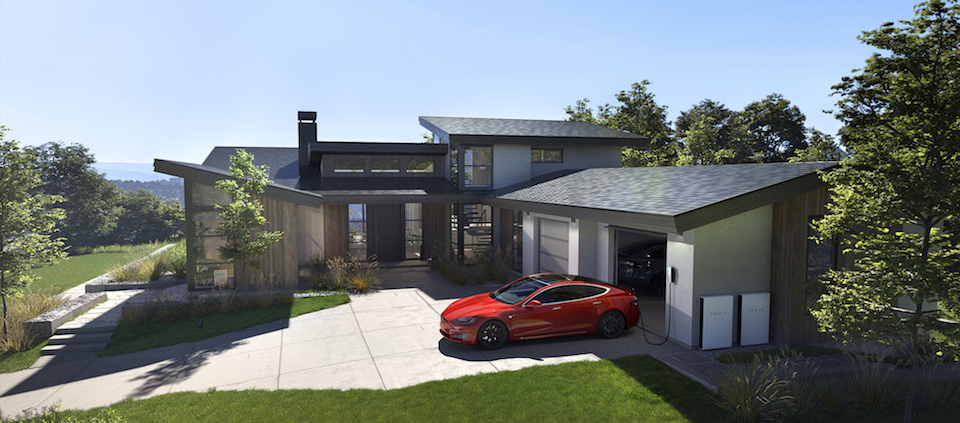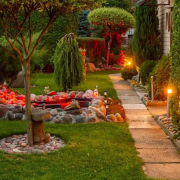Top Tips for Eco-Friendly House / Green Homes
Translating into energy savings, increased property value and a reduced carbon footprint, green homes are more sought-after than ever
Now a mainstream concept, eco-friendly homes provide incredible energy savings and contribute to lowered living costs and a positive impact on the environment.
Home buyers now look for smart features and eco-friendly options meant to reduce their carbon footprint, such as the new Tesla solar roof, smart thermostats, energy smart appliances and tankless hot water heaters. These initial investments in new technology dramatically reduce consumption and increase property value.
The Sustainable Home
Sustainability can be separated into passive sustainability and active sustainability
Passive Sustainability
A passively sustainable home is developed to take advantage of its surrounding environment. For instance, a home built with the most exterior surface facing north and south allows it to take advantage of the most sunlight possible. This simple solution reduces the need to turn on heaters and lights during the majority of the day and keeps the temperature comfortable during the evening.
You can also look to the landscape to create passive sustainability. Strategically planted trees add shade to the home, reducing the need to use air conditioning by approximately ten percent. As long as the trees don’t block out any solar panels, they’re an excellent natural way to cool the air both inside and out.
As a bonus, trees provide an excellent anchor for clotheslines to reduce reliance on clothes dryers. Ask your local garden centre for recommendations about the species of trees that would be best for your landscape and region.
Unsure about the permanence of trees? Homeowners can also plant gardens based around native species and grasses. These require much less water and create a naturally thriving green space.
Active Sustainability
The Tesla roof is a prime example of active sustainability. Made of sleek solar tiles, the Tesla roof completely replaces an existing roof with materials three times more durable than standard roofing tiles, but less than the cost of a new roof and new solar panels. The innovative Tesla tiles absorb natural light while the battery banks store extra power for when it’s needed, such as during a power outage (eliminating the need for a fuel generator.)
With the capability to power a home for decades and monitor/control power consumption in real time, the Tesla roof is an ideal solution for reducing energy consumption and costs.
Advancements in smart home technology also make it possible to monitor and lower energy usage. Controlling a thermostat while you’re away from home, using automated window and deck covers (awnings or permanent covers) to shade or heat the house at will, and setting lights on timers are all great ways to spot-reduce energy consumption using smart home technologies. Most commonly managed via smartphone apps, these technologies easily create customized control over your home’s energy expenditure.
Purpose-Built Sustainability During Renovations or New Construction
Green Options for Your New or Improved Home
Windows
Adding larger double or triple paned windows will allow your home to absorb as much sunlight as possible, while keeping the temperature at a comfortable level. Floor to ceiling windows will not only frame the views, adding more beauty to your home, but they will help fill your home with natural light.
Exterior
Sustainable building materials and reclaimed wood are a few other ways that you can lessen environmental impact. For exterior finishing, reconsider vinyl siding and look to a material like fiber cement instead. Sustainable and cost-effective, fiber cement is made from cement, sand and wood fibers. It’s also non-toxic, durable, holds paint well and is designed to last 50 years, much longer than vinyl. In comparison, vinyl is made of polyvinyl chloride (PVC) a toxic material that cannot easily be recycled and has a long afterlife.
Paint
Low VOC and no VOC (Volatile Organic Compound) paints are also becoming increasingly popular. These “green” paints are low in or free of chemicals that off-gas into your home and degrade the air quality. These paints also biodegrade more easily and have a much shorter afterlife than their toxic counterparts.
Flooring
Look to sustainable flooring options like engineered bamboo flooring, rather than traditional hardwoods. Harder than maple and oak, bamboo is a renewable material that grows at a much faster rate than hardwood trees, which can take decades to grow. In comparison, a stalk of bamboo only takes five years to grow large enough to be harvested. If you do opt for bamboo flooring, make sure that the flooring you choose is top-quality and manufactured using chemical-free materials.
Upgraded Water Heater
When adding or replacing a water heater, consider a tankless model. These heat water on demand, rather than continuously heating a large supply of water—a drain on energy and resources.
Simple Ways to Improve the Sustainability of Your Home
Not Quite Ready to Renovate? Shrink Your Home’s Carbon Footprint with These Small Changes
- Cold water wash and skip the clothes dryer- This will save roughly 90% in energy used during the wash cycle, and 100% on the drying cycle. Your clothing will have a longer lifespan as well.
- Use a programmable or smart thermostat- Climate control reduces excessive energy use and being able to turn AC off or on at the touch of a button can make a huge difference in consumption.
- Use natural cleaning products- Since cleaning products are used every day, it makes sense to invest in chemical free cleaners. Many eco-friendly products are refillable as well, reducing packaging waste.
- Add LED lighting- As your lightbulbs fade out, swap them with LED bulbs. These use approximately 90% less energy than traditional incandescent bulbs and they last for about 25,000 hours – that’s 3 years if they’re used 24/7!
When you’ve invested in major home improvements and would like to know what your residential property is worth, we can help. With decades of experience, our team of expert appraisers at D.Fritz serves Southern and Central Vancouver Island as well as the Gulf Islands. Contact us today to get a clear picture of your home’s value in today’s marketplace.






